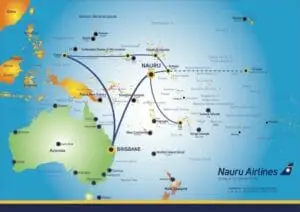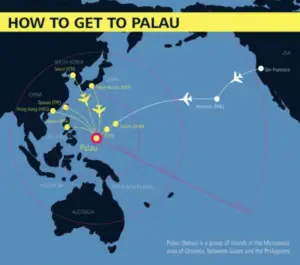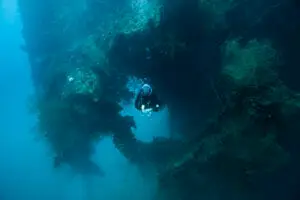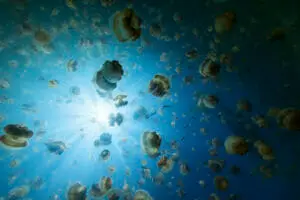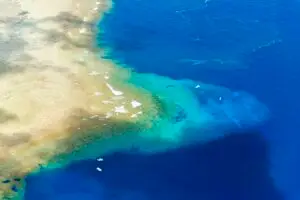The name Helmet Wreck is prolific amongst the dive shops here in Palau due to the fused rows of helmet stacks still present in the stern hold.
• Minimum/ Maximum Depth: Stern is at 45 feet deep; Bow is at 110 feet deep
• Suitable for: Wreck Diver certification needed for wreck penetration. All divers should carefully monitor air consumption and bottom times. Intermediate with Wreck Diver preferred
• Location: Malakal Harbor, west of Koror
• Time/Distance from PDA: 2-3 minutes by speedboat
• General Specifications: Wreck Type: Japanese Army Cargo Ship
• Built: shipbuilder and year are unknown
• Tonnage: unknown, approximated at 1,000 tons
• Length: 189 feet (57.6 meters)
• Beam: 31.3 feet (9.5 meters)
History of the Helmet Wreck:
Discovered in the late 1980s the Helmet Wreck, aka Depth Charge Wreck, aka X1 is a small old-fashioned coaster without an official name. The true name of this ship remains unknown, having never been documented in the Navy archives. It is rumored the ship was confiscated by the Japanese in Southeast Asia during the war and sunk during DESECRATE ONE operation by planes operating from the US Aircraft carrier the USS Lexington on March 30, 1944.
It took over seven (7) 500 lb. bombs and four torpedoes to finally sink the vessel where it now lies tucked inside Malakal Harbor, resting upright at the base of a hill with the stern in 110 feet (35 meters) and the stern in 45 feet (15 meters) of water.
Watch: Why You Should Dive The Amazing Iro Maru wreck in Palau?
It is quite remarkable that the bomb that sank the ship was dropped on the aft hold and ripped the starboard side wide open but did not detonate the over 85 depth charges later found intact in the same hold.
What can you expect when diving Helmet Wreck?
Dropping in along the mooring line, tied off to the stern of the ship, the deck materializes after a depth of 45 feet (15 meters). One of the first sights divers come across is a round aft gun platform immediately following degrading and twisted guardrail guiding the diver down to the bow of the ship.
There were once two depth charge release boxes with active charges ( charges were removed in 2013-2014) located on each side of this platform. The gun barrel is pointing to port, and the gum mount is a heap of mangled steel.
It is here divers can take a look at the propeller that is if they can find it amongst the silted bottom. The rectangular rudder, on the other hand, is clearly visible, and it’s noticeable that no damage was done to this portion of the ship.
The exposed main cargo hold once revealed stacks of depth charges neatly arranged on the port side and a few scattered about on the starboard side following the explosion which ripped apart the hull. The wreck gets it aptly termed name Helmet Wreck from the stacks of helmets still present today under the port upper deck.
Bound together after decades of corrosion the helmets are a very popular sight, but don’t miss the piles of rifles, ammunition and gas masks, belts and shoes peeking out amongst the sediment. The bow is half full of silt but amongst the maze of electronic equipment and ceramic jars, there are three (3) huge radial engines for Zeke fighter planes.
Continue up to the raised-bow and divers can find a two-headed anchor winch with anchor chains still attached and extending on into the chain holds and eventually to the anchors. Brass lanterns, an old taffrail log (just how fast did the ship go?), medicine bottles, Kirin bottles and even a few old sake bottles are amongst the last of the items seen amidst the bow.
Also read: Big Drop Off Palau: Big Views, Big Drifts, and Big Pelagics
Most divers can dive this entire wreck in both directions and still wish to come back for another dive to look a little closer within all the nooks and crannies. Look closely amidst the rich coral formations of stag horn, brain and lettuce corals and spot a few Banded Pipefish or two.
Shrimp peer their heads out from time to time and so do the territorial Tomato Anemone Fish. Divers should keep their eyes out for the ever-present Lionfish and Stonefish hiding along the walls and the resident Yellow Ribbon Eel known to hide out on the fore and aft mast. And, of course, the ever-present tropical fish and ample amounts of invertebrates can be found in, on and around Helmet Wreck.
Words of Caution when scuba diving Helmet Wreck:
Although the Helmet Wreck has come to rest lying on a sandy bottom it is not advised to penetrate this wreck because the structures are very unstable. And like most other ship and plane wrecks found in Palau waters live ammunition may still be present today.
Also read: 5 of the best wreck dives in Palau
Even though the countless hours were spent in 2013 and 2014 removing ammunition and depth charges from this wreck some ammunition may still be present. Picking of live ammunition is extremely dangerous due to their age and volatility; they can explode or leech unsafe products if disturbed. Divers are also advised to watch their depth and bottom time.
So many distractions on this wreck can potentially deter you away from your no deco limits.
Please feel free to contact us directly if you would have any questions. We love to hear from you.



